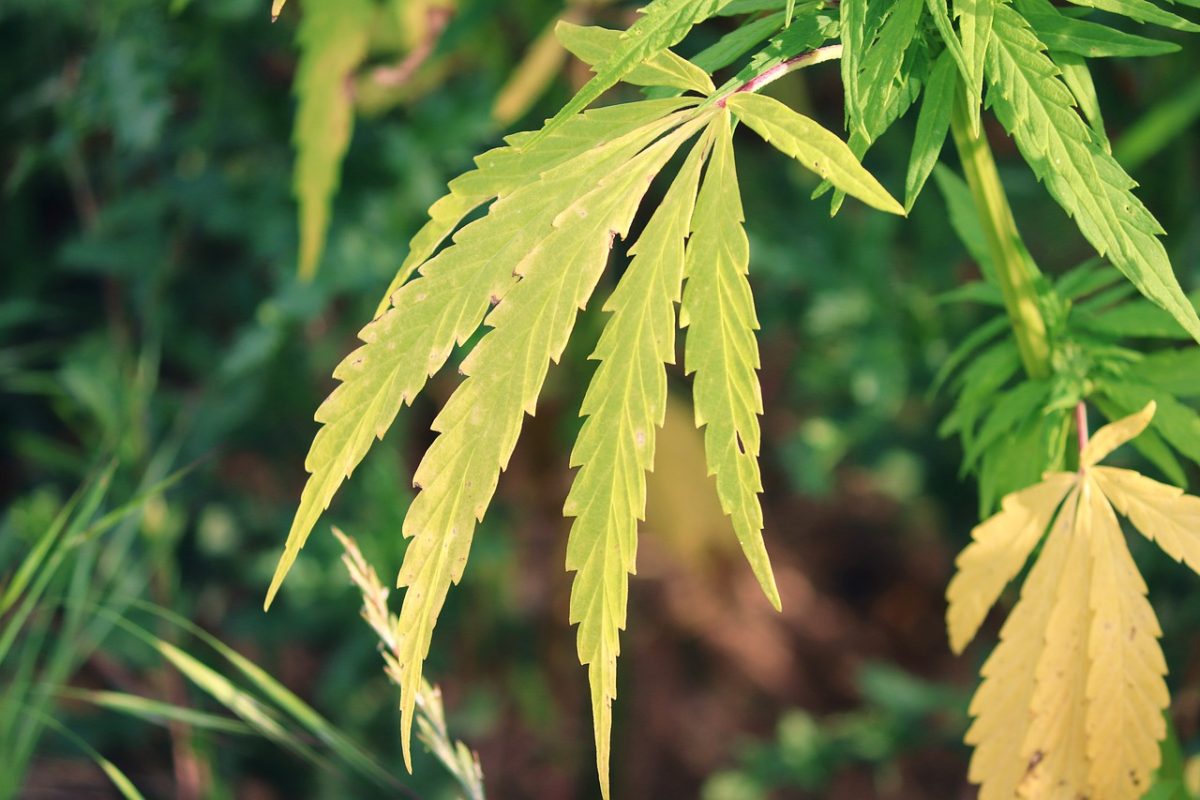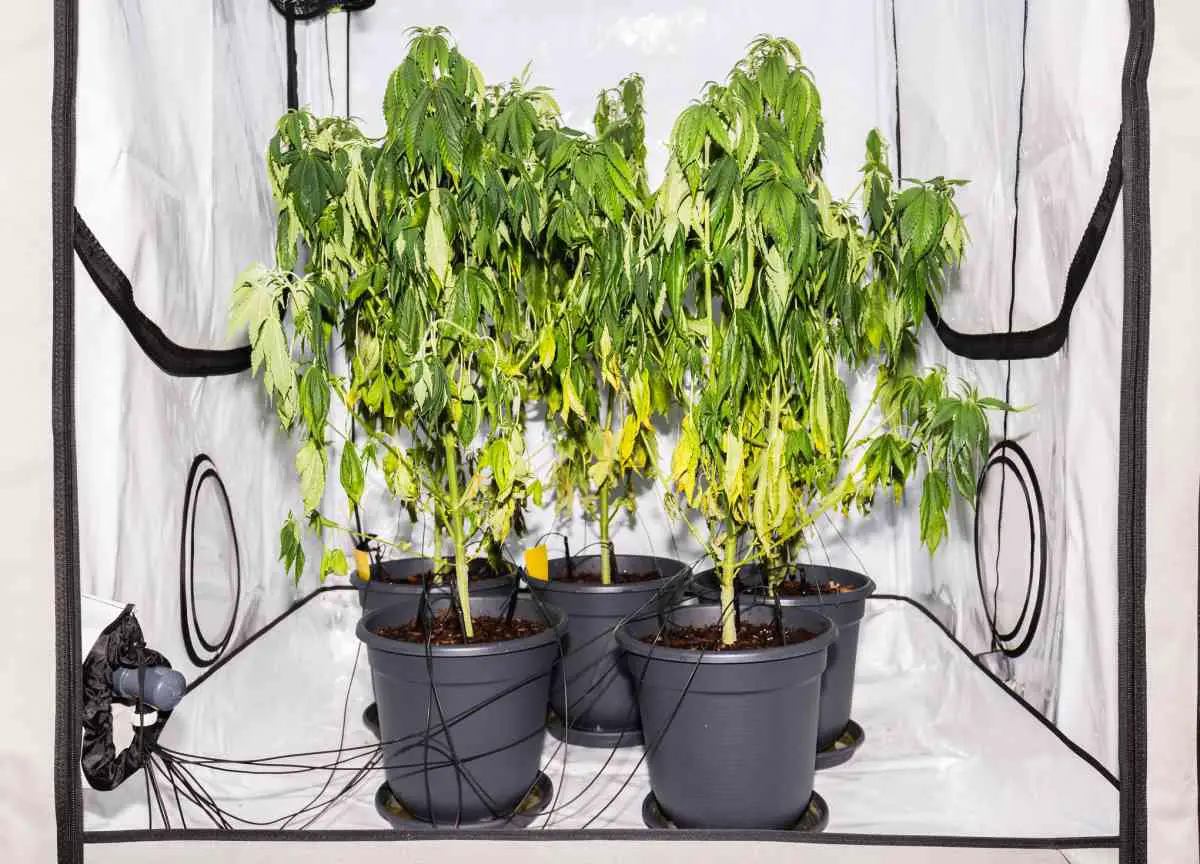The cannabis plants, just like most other green plants, use their leaves to communicate the state of their need. If they’re well-fed, well-trained, and protected, they’ll be smiling in deep green and pose a healthy swirl. If they’re not, they’ll send you signals through deformed leaves, among other channels they might choose to pass their message of distress.
Table of Contents
What Causes Deformed Leaves in Cannabis Plants?
Deformed leaves in cannabis plants is mostly caused by pH imbalance. pH imbalance inhibits the absorption of vital nutrients, even when they’re sufficient in the grow medium. Deformed leaves could also be a sign of nutrient deficiencies, nutrient burn, light burn, overwatering or underwatering, and root rot.
If your plant’s leaves are deformed; either curled upwards or downwards, droopy, or burnt, you should first check the pH of the grow medium.
Leaf deformities point out deep-seated plant problems that if left unsolved, can reduce your yield substantially.
Deformed leaves aren’t a good sign. However, with the right diagnosis, cannabis leaf deformities can give you insights into the underlying ailment that could have killed your plant.
Let’s dive deeper into this subject, when we resurface, you shall be several steps ahead in diagnosing your plant’s leaf problems and treating the stresses they point you to.
Nitrogen burn
Nitrogen is an essential nutrient for growing cannabis. The cannabis plant needs nitrogen at all stages of its growth (though in different quantities at every stage), but too much nitrogen will curl the leaves downwards.
Nitrogen toxicity can be the result of having high levels of overall nutrients or using vegetative nutrients at the flowering stage. In the case of nitrogen burn, your plant’s leaves will be dark green, but they’ll be curled downwards into a claw.
You can solve nitrogen toxicity by flashing your plant, then after, using the right nutrient ratios for every stage.
Overwatering
When the cannabis plants are overwatered, the leaves will be droopy and curl downwards. They take this shape because they have too much water in them.
While overwatering is mostly caused by poor watering schedules, your grow medium can also cause poor drainage leading to a water-logged plant.
A suitable medium allows the water to infiltrate easily, letting the roots only trap what they need. A bad medium will form clumps that are hard to infiltrate, leaving your marijuana plants overwatered.
How do I know if I'm overwatering my plants?
Keeping your watering schedules is excellent, but sometimes you might overwater your plants without even knowing. If your leaves are turning yellow, getting droopy, and begin wilting, you are overwatering your plant.
Can plants recover from overwatering?
Yes, an overwatered plant can recover, but it depends on the stage of destruction the overwatering had caused.
If you diagnose the plant too late when the roots have severely rotten, the plant might come back to life only to die days later. This is why you should always treat the leaf deformities with urgency.
If you catch it early enough, you can solve overwatering problems through the following tips;
1. Stop watering
An overwatered plant is droopy and looks unhealthy. When you stop watering, they spend the water they already hold in their roots and leaves. The water content in the soil will also evaporate, leaving room for air to get to the roots.
Monitor the soil, touch it, feel how moist it is, after a few days, water appropriately.
2. Drill holes under the grow containers
Sometimes your plants suffer overwatering not because you overwater them, but because the grow container holds too much water for so long.
When you drill the containers, they lose more water, leaving the roots of your plants with just enough till the next watering.
3. Use a more powerful fan
Using a fan will increase the loss of water through the leaves and increase the uptake of water.
When the powerful fan runs for long, the leaves will lose enough water to keep only optimum levels in the plant. You might want to combine this method with drilling holes under the grow pot and reducing watering intervals.
4. Stop using nutrients until the plant is healthy
When the plan is overwatered, even the uptake of nutrients is inhibited. Adding more nutrients when the plant is in distress further drains the plant.
When you continue exposing the plant to more nutrients when it can’t absorb it, the plants will suffer nutrient burn.
5. For wilting plants
At an advanced stage, overwatered plants begin to wilt. This is a crucial stage because you can easily lose the plant. Take them to the shade and remove the dying leaves.
Make holes on the pot and drain the water. Do not water until the soil is dry. When you resume watering, start slowly, just moistening the medium. It will regain its health, and you can resume and maintain a proper watering schedule.
6. Water your outdoor plants during the day
Though some growers do it, watering your cannabis plants at night exposes them to wet ground for too long.
They will suffer overwatering because even though you might keep a good schedule, the soil takes too much water. After all, the rate of evaporation is low. Water your plants during the day.
Underwatering
Just like overwatering, underwatering your cannabis plants will deform their leaves. When underwatered, the leaves will curl downwards and hang loosely from the stem. Underwatering, though a common problem is easy to solve.
All you have to do is water them, and you will see them perk up with life. Keep a regular watering schedule to nourish and avoid stressing the plant.
Light burn
Using appropriate lights for your grow room is essential, but so is the distance you leave between it and the plants.
If you keep the light source too close to the top of the plant, it will suffer light burn, which causes the leaves to curl up and turn yellow.
To save your plant, use the appropriate lights for your grow; light of the right intensity. But still, keep it at a safe distance from your plant.

Root Rot
Root rot is majorly caused by overwatering. When overwatered, air doesn’t reach the roots, creating a good environment for pathogens to thrive, causing root rot.
Root rot will make the leaves weak and frail; they will curl downwards and form brown blotches. To avoid root rot, use the right grow soils, and stay strict to your watering schedules.
Nutrient deficiency
Lack of nutrients will deform your leaves in varied ways. Lack of potassium will make your leaves curl downwards, turn yellow, and have darker veins.
Fixing potassium deficiency is pretty tough with combined-nutrient fertilizers because it arises from too much calcium and nitrogen. You can solve the problem by using a single-nutrient potassium fertilizer.
Phosphorous deficiency, on the other hand, will make your plants turn purplish with darker parches. Phosphorous deficiency will affect your plant adversely if prolonged because the plant needs a lot of phosphorous when flowering.
Bugs and pests
Bugs and pests are your plant’s worst enemies. Bugs infestation will curl and claw your plant’s leaves.
You can eradicate them by using pesticides, but when delayed, your plants might take longer to recover. Some common bugs you must look out for are the russet mites and fungus gnats.
In conclusion
Leaf deformation is a signal of distress it sends to you. Sometimes the message is as harmless as a cannabis plant folding its leaves to shield the top of the leaf from the sun.
Other times, it is as severe as the plant curling its leaves because of root rot. You should listen when your plant’s leaves tell you of their distress, when you diagnose the ailment behind the leaf deformation earlier, you will have a good chance of saving your plant.

